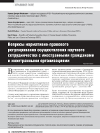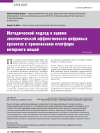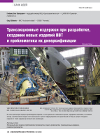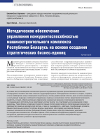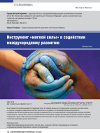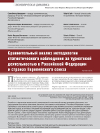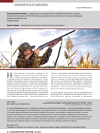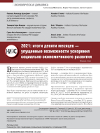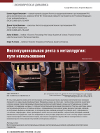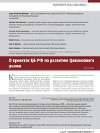Legal Regulation Issues of Scientific Cooperation with Foreign Citizens and Foreign Organizations
DOI: https://doi.org/10.33917/es-6.180.2021.144-149
The article offers a general overview of the legal regulation of scientific cooperation with foreign citizens and foreign organizations in the context of the main legal problems of interaction of Russian scientific bodies with interested foreign subjects. During the work method of analysis, system-structural, formal-legal methods and a method of interpreting the rules of law were used.
Источники:
1. Ukaz Prezidenta RF ot 1 dekabrya 2016 g. N 642 (v red. ot 15 marta 2021 g.) “O Strategii nauchno-tekhnologicheskogo razvitiya Rossiiskoi Federatsii” [Executive Order of the President of the Russian Federation of December 1, 2016 No. 642 (as Amended on March 15, 2021) “On the Strategy for Scientific and Technological Development of the Russian Federation”]. Konsul’tantPlyus, available at: http://www.consultant.ru/document/cons_doc_LAW_207967/
2. Deklaratsiya o printsipakh mezhdunarodnogo prava, kasayushchikhsya druzhestvennykh otnoshenii i sotrudnichestva mezhdu gosudarstvami v sootvetstvii s Ustavom Organizatsii Ob”edinennykh Natsii (prinyata 24 oktyabrya 1970 g. Rezolyutsiei 2625 (XXV) na 1883-m plenarnom zasedanii General’noi Assamblei OON) [Declaration on Principles of International Law Concerning Friendly Relations and Cooperation Between States in Accordance with the Charter of the United Nations (Adopted on October 24, 1970 by Resolution 2625 (XXV) at the 1883th Plenary Meeting of the UN General Assembly)]. Organizatsiya Ob”edinennykh Natsii, available at: https://www.un.org/ru/documents/decl_conv/declarations/intlaw_principles.shtml.
3. Soglashenie mezhdu Pravitel’stvom Rossiiskoi Federatsii i Evropeiskim soobshchestvom o sotrudnichestve v oblasti nauki i tekhnologii (podpisano v g. Bryussele 16 noyabrya 2000 g.) [Agreement Between the Government of the Russian Federation and the European Community on Cooperation in Science and
Technology (Signed in Brussels on November 16, 2000)]. Elektronnyi fond pravovykh i normativno-tekhnicheskikh dokumentov, available at: http://docs.cntd.ru/document/901801289.
4. Sbornik deistvuyushchikh mezhdunarodnykh soglashenii o nauchno-tekhnicheskom sotrudnichestve, podgotovlennyi Departamentom mezhdunarodnogo sotrudnichestva v obrazovanii i nauke Ministerstva obrazovaniya i nauki Rossiiskoi Federatsii [Collection of Current International Agreements on Scientific and Technical Cooperation, Prepared by the Department of International Cooperation in Education and Science of the Ministry of Education and Science of the Russian Federation]. Sbornik deistvuyushchikh mezhdunarodnykh soglashenii o nauchno-tekhnicheskom sotrudnichestve, available at: http://window.edu.ru/catalog/pdf2txt/933/66933/39709.
5. Zaklyuchennye RAN soglasheniya o mezhdunarodnom sotrudnichestve [International Cooperation Agreements Concluded by RAS]. Ofitsial’nyi sait RAN, available at: http://www.ras.ru/about/cooperation/intagreements.aspx.
6. Federal’nyi zakon ot 9 iyulya 1999 g. N 160-FZ (v red. ot 2 iyulya 2021 g.) “Ob inostrannykh investitsiyakh v Rossiiskoi Federatsii” [Federal Law of July 9, 1999 No. 160-FZ (as Amended on July 2, 2021) “On Foreign Investments in the Russian Federation”]. Konsul’tantPlyus, available at: http://www.consultant.ru/document/cons_doc_LAW_16283/



